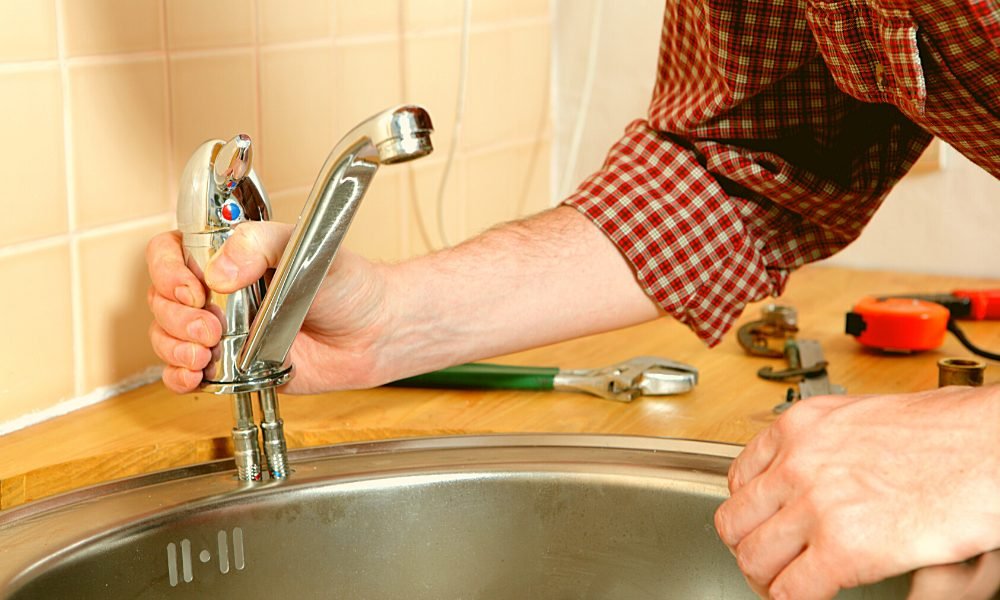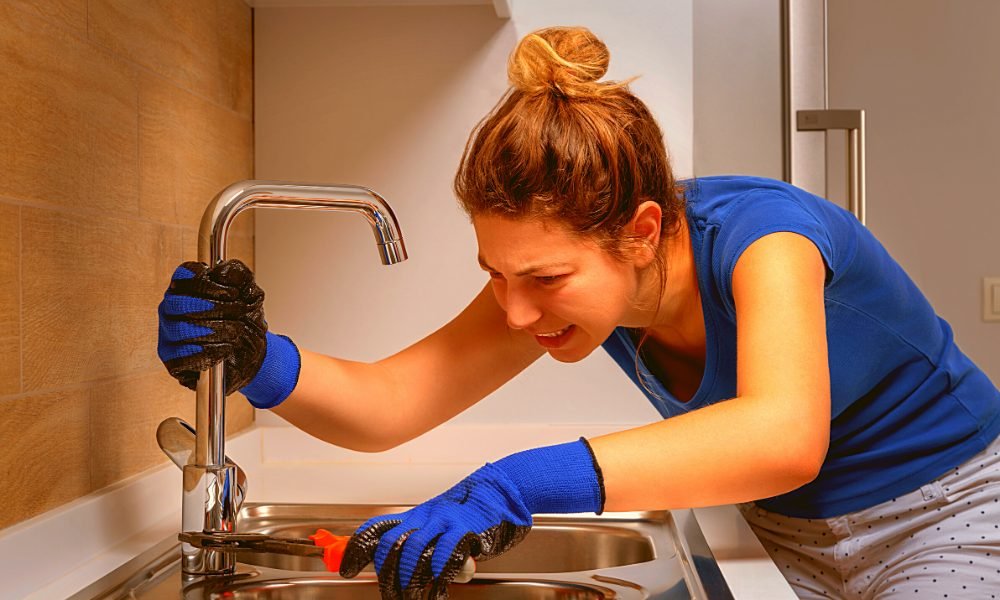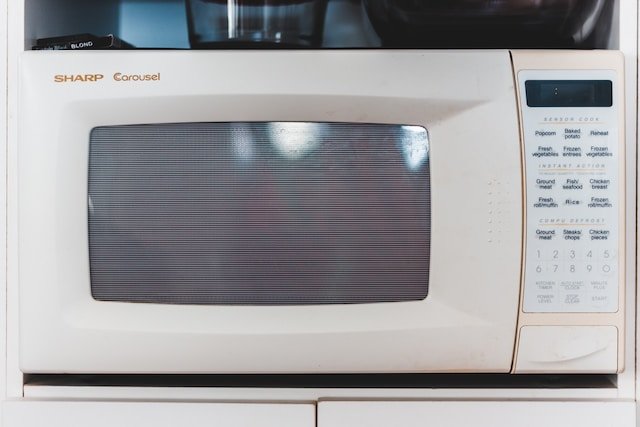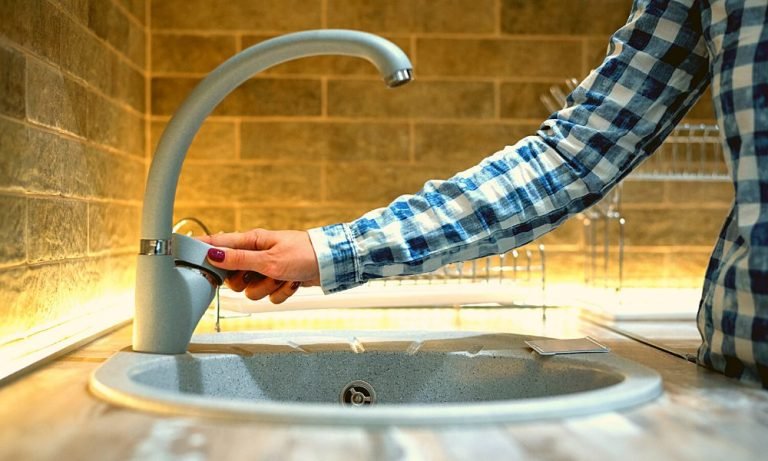How To Install a Kitchen Faucet Without a Plumber?

Want to know how to install a kitchen faucet without a plumbers help? Then follow our instructions to make your kitchen area good as new. Your old kitchen has seen better days and was durable for years. If it starts leaking or simply outdated, replacing the older one with a newer one is the most popular DIY project in the kitchen renovation grand scheme.
Buying the right kitchen faucet also matters as it depends mostly on existing plumbing. Fortunately, modern plumbing designs of faucets made the changing faucet job easier. It is a quick day project that only makes a significant difference in your kitchen space’s look. You can always save money if you DIY this project.
Your kitchen faucet is the most used thing at your home. If your faucet becomes rusty, leaky, old, and out of style, then you should learn about how to install a kitchen faucet. Read Here: THE BEST KITCHEN FAUCETS – BUYER’S GUIDE AND REVIEWS
Read More:
- Master The Art Of How To Vacuum Mattresses And Pillows
- Master How To Vacuum Stairs Efficiently: Quick, Handy Guide!
- Can Robot Vacuums Be Hacked? Discover The Facts!
- Why Is My Robot Vacuum Beeping? Find Out Here!
- Easy Guide On How To Clean And Replace Vacuum Filters
Tools Required to Replace the Old Faucet with the New Faucet
You want to have every necessary tool in place before you start on how to install a kitchen faucetprojectby yourself. Here is the list of them here,
- protective eyewear
- a basic wrench
- a Basin wrench
- channel locks
- adjustable end wrench
- screwdrivers
- a small cut-off saw
- set of Allen wrenches
- needle-nose pliers
- long-handled Phillips head screwdriver
- plumbers putty
- pipe dope
- WD-40
- bowls
- towels
- flashlight
- masking tape
Out with the old

Turn Off the Valves
Shut off the hot and cold water valve located underneath the faucet. After that, open the faucet to relieve the water pressure.
Disconnect the Faucet Supply Line
Here comes the fun part disassemble. Start disconnecting the faucet supply line with a wrench. Ensure you keep a bucket when you start working with the supply line to catch the remaining water.
Remove the Old Faucet
From under the sink’s kitchen, you can see the hardware holding the kitchen faucet in shape. Use a wrench to remove those nuts and pull out the old faucet. If the faucet is not coming up, then it must be the corrosion. You may need to go hard on pulling out the tap. Put some elbow grease on it to make it easier to pull. Once you have removed the faucet, make sure to clean up the area.
Read More:
- Master The Art Of How To Vacuum Mattresses And Pillows
- Master How To Vacuum Stairs Efficiently: Quick, Handy Guide!
- Can Robot Vacuums Be Hacked? Discover The Facts!
- Why Is My Robot Vacuum Beeping? Find Out Here!
- Easy Guide On How To Clean And Replace Vacuum Filters
In with the new
Install the Deck Plate
Put the rubber or plastic gasket or trim ring on top of the faucet holes in the sink and install the set deck plate. According to the caulk usage or plumbers putty in gaskets set up, Mention to the manufacturer’s instruction.
Feed-In the Lines
Put the faucet line in the hole.
Affix the Hardware Under the Sink
Set up the washers and nuts below the sink. If you use plumbers putty or caulk for the gasket and trim ring installation, clean away the extra grease under the sink.
Set Up the Pull Down Faucet
For the pull-down faucet, fasten the quick connect hose with the water supply pipe. Takedown the hose and attach the weight to it.
Connect the Lines
Most faucet has hot and cold water supply lines before you pull apart everything. You just need to connect those lines to their appropriate water supply line. Attach the water supply lines using plumbers tape (Teflon tape) to seal those pipelines. Take a small strip of the Teflon tape and wrap it clockwise around the threads of pipelines. Start to screw up each of the nuts by hand and then use an adjustable wrench to tighten them up.
Check for The Leaks
Turn on the water supply slowly to check if there are any leaks. Tighten the connection of the supply if needed.
Clear The Lines
Detach the aerator from the faucet. Then slowly turn on the water and let the water run. Keep the aerator free for a few minutes to let the water pass to clear the lines. Reinvestigate everything for leaks and make readjustments according to it.
Replace the Aerator
Shut off the faucet and replace the aerator.
Choosing Your Replacement Faucet
For every guide for how to install a kitchen faucet,you first need to gather the necessary replacement faucet.
- Take photos of your current kitchen faucet and take the measurements where the holes in the sink are situated. Use those photos and measures to help you when you are going to purchase a replacement faucet. You will be more comfortable to pick the one that fits on your sink. Select the one that has openings that align with those that are already on your sink or countertop. It should be the same measurements of your older faucet that fits the space and meets your needs. If your more aged sink or countertop has extra space, then the new faucet does not need it, so you can usually buy a hole cover for the same material as the faucet.
- Suppose you want your new faucet spray that has pullout spray that comes from the faucet spout. Choose the one with a gooseneck that place downwards rather than straight up. Those faucets that are straight-up are famous for leakage. Those leaks will be another pain to solve, and it will run into your cabinet. It is usually late to find out the leakage of those faucets.
- Purchase the highest quality faucet within your budget. As higher qualities are more durable, it will last longer and less likely to leakage. In my opinion, the gooseneck type faucets are much better and usually better quality. Most high-quality faucet comes with a lifetime warranty for original buyers.
Read More:
- Master The Art Of How To Vacuum Mattresses And Pillows
- Master How To Vacuum Stairs Efficiently: Quick, Handy Guide!
- Can Robot Vacuums Be Hacked? Discover The Facts!
- Why Is My Robot Vacuum Beeping? Find Out Here!
- Easy Guide On How To Clean And Replace Vacuum Filters
Always Turn Off the Water Supply Before Installing a Kitchen Faucet
Before you start how to install a kitchen faucet project, you will need to turn off the water supply for the existing faucet. Switch off the hot and cold water supply lines shut off valves connected to the underneath of the faucet. Turn off the valve by turning it clockwise, and you should not require a wrench for this. Open the faucet to reduce the water pressure and check any water coming from the faucet.
If your faucet is at least a few years old, then you may find the valves stuck or rusted that will make them impossible to move. Apply some heat to the valve with a hairdryer that will effectively loosen the valve to close it. You can also use locking pliers to grip the valve and gently persuade it to the off position. Be aware before you apply excessive pressure on turning off the valve as you can break the valve, which will result in water shooting out and flooding the whole cabinet with water. Fixing that thing is another pain and cost you more money.
Before you attempt to turn off the valve, you should better turn off the water valve’s main supply if it is not working. That is mainly situated inside a basement or crawlspace where the waterlines enter your home. If you still can not locate the main valve, you can always use pliers to turn off the meter’s water. That is often located in your yard under a small maintenance hole like the cover.
Removing the Old Faucet is Often Difficult Than It Sounds
Once the water supply is shut off, remove the old faucet. Lossen up the nut that holds it in place that is underneath the sink and then pulls the faucet out of that holes. Unfortunately, it is not easier to do the task as the space underneath the sink where the faucet is attached is often narrow.
Because of the location, the area is pitch black. You will need a strong working light to light up the dark area and an adjustable wrench to loosen the nuts. If you see the shutoff valves, nuts holding onto the faucet can be stuck or rusted over years of usage. If you run into this issue, try to use a brush to remove as much corrosion as possible. Use a wire brush and the spray penetration oil-like liquid wrench on the nuts to melt the corrosion.
It can take more than a half-hour to overnight for the oil to work. After that, if you try to loosen the nuts again with the wrench, they still won’t turn. Then you will have to cut it off with a reciprocating saw or a hacksaw after removing the faucet and clean up the grime or dirt from the sink surface. If you do not want to do or learn about how to install a kitchen faucet, then call a plumber at this point.
Read More:
- Master The Art Of How To Vacuum Mattresses And Pillows
- Master How To Vacuum Stairs Efficiently: Quick, Handy Guide!
- Can Robot Vacuums Be Hacked? Discover The Facts!
- Why Is My Robot Vacuum Beeping? Find Out Here!
- Easy Guide On How To Clean And Replace Vacuum Filters
Know your limits
Sometimes you can not wedge your body enough to go under the sink to have a free path to reach the nuts holding the faucet in place when it looks like you can not get the nuts or you will have to remove the additional plumbing like the sink drain trap or the garbage disposal.
That two hours of faucet replacement job can go for the entire weekend plumbing project. If you do not have any plumbing DIY experience, it is often better to call for a plumbing professional if you can not replace the faucet and reinstall a new one.






